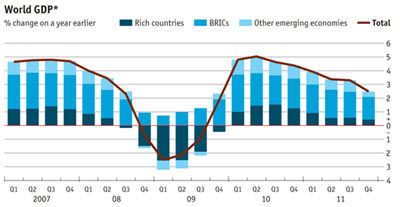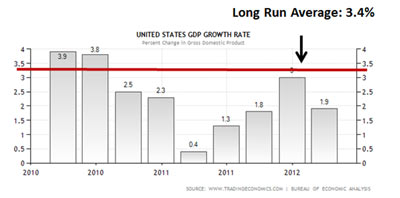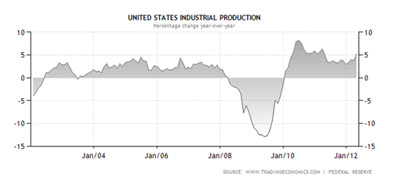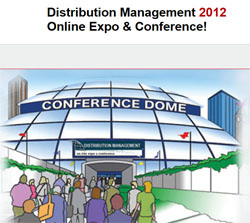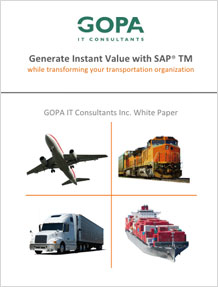 |
June 7, 2012 - Supply Chain Newsletter |
 |
This Week In SCDigest
|
|
||||||||||||||||||||||||||||||
Upcoming Videocast:
Operations Rules for Driving
Business Value & Growth
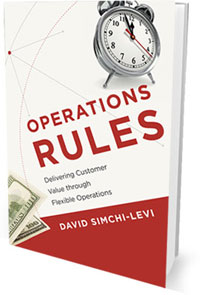
Part 3: Complexity Reduction: Long Tail Analysis
Benefit from Clear Actionable Insight
into your Product Market Performance
Featuring Dr. David Simchi-Levi of MIT
New On Demand Videocast:
On the Trail to Traceability

Successfully Executing Recalls
in an Era of New Legislation, New Complexity, New Challenges
Featuring Simon Ellis, Practice Director,
Supply Chain Strategies for IDC Manufacturing Insights, and Dave Bruno, Editor of Commerce in Motion
MAJOR NEW RESEARCH PROJECT
Supply Chain
Execution 2012

Research Questions: What is current state of Logistics/Supply Chain Execution Technology (WMS, TMS, Visibility, etc.)? What are the Key Trends in Adoption? How Prevalent is new SCE "Platform" Thinking?
Can you please help by taking this quick 10 minute survey? All respondents will receive a summary of the data in just a few weeks.
Just catching up on a few of the many emails we get each week. Our feedback of the week comes from Paul Dowler of Lenavo, relative to our recent SCDigest Letter on Supply Chain Visibility. Also publish a letter on the "Undercover Boss" episode that found working conditions in the DC are pretty tough, and some interesting comments on Amazon.com's surprise acquisition of Kiva Systems earlier this year. Feedback of the Week - Supply Chain Visibility: |
|
The "visibility hub" that you refer to in your visibility framework graphic reminds me of U.S. Department of Defense efforts to provide a "common operating picture" (COP) of supply chain activities associated with the various types of military campaigns. - Appreciate the work that you do @ SC Digest to keep our field abreast with information from outside each of our respective "4 walls." Paul Dowler |
|
More on Visibility:
|
|
Thank you for your excellent Supply Chain Digest Letter on Supply Chain Visibility. It is the finest work I have seen on this critical topic. I think the Visibility hub is an intriguing idea. If such a technology could really be developed, it would dramatically change the practice of supply chains. The concept of Perfect Logistics is also intriguing. Rob Delano |
|
On Amazon Buys Kiva Systems:
|
|
I suspect most dot.com competitors will be reluctant to buy a this kind of technology from and then have to rely on Amazon for future support of it. So perhaps Amazon strategically feels this purchase will keep game-changing innovative technology out of the hands of its competitors. Dr. Larry Lapide |
|
KIVA also only requires about a 9 foot clear ceiling height and the product can be moved from one warehouse to a new warehouse over a weekend. This allows Amazon to consider lower cost lease buildings (anybody got an empty mall?) for site location and gives them the ability to rapidly move to another site with minimal cost should the lease costs get too expensive. No more being held hostage by a landlord because he knows it would cost you a couple of million to tear down and move an operation to a different site or that the business could not afford the disruption. Amazon also received a lot of bad press over the past year regarding heat and working conditions in some of it's warehouses. Robots don't require air conditioning. It is much cheaper to install fans and control the environment at the pick stations than to pay for cooling an entire warehouse. $775M may seem like a lot but in the end it will turn out to be a bargain for Amazon. Don Gilmore |
|
| On Tough DC Working Conditions at Undercover Boss: |
|
Often times in much of the country, warehouse facilities are kept at ambient temps- marketplace ROI's rarely justify climate control. That being the case, the warehouse is hot in the summer and cold in the winter. It can be grueling- try stripping a floor loaded Boxcar filled floor to ceiling with 50 lb bags of dog chow on a hot July afternoon. Longer rest periods and liquids are highly advised! Warehouses can be a bit dusty too. Heck, I even recall the days when we had to ink-stencil the LTL freight after order selection before the proliferation of PC-based printers and adhesive labeling. That ink ruined many a shirt or pant! So, many will consider that to be lousy duty understandably. The question though is what is the path to progression beyond this level? Is the leadership, training, methods, equipment, uniforms and so on supportive so there is at least a professional, team oriented environment? Desk jobs can be lousy too! Tom Miralia
|
|
SUPPLY CHAIN TRIVIA ANSWER
Q: How much did the average West Coast Longshoreman (port worker) take home in 2011?
A: $129,932, according to stats from the Pacific Maritime Association last week. That includes overtime pay, but not benefits.
| © SupplyChainDigest™ 2003-2012. All Rights Reserved. SupplyChainDigest PO Box 714 Springboro, Ohio 45066 |
POWERED BY: XDIMENSION |


